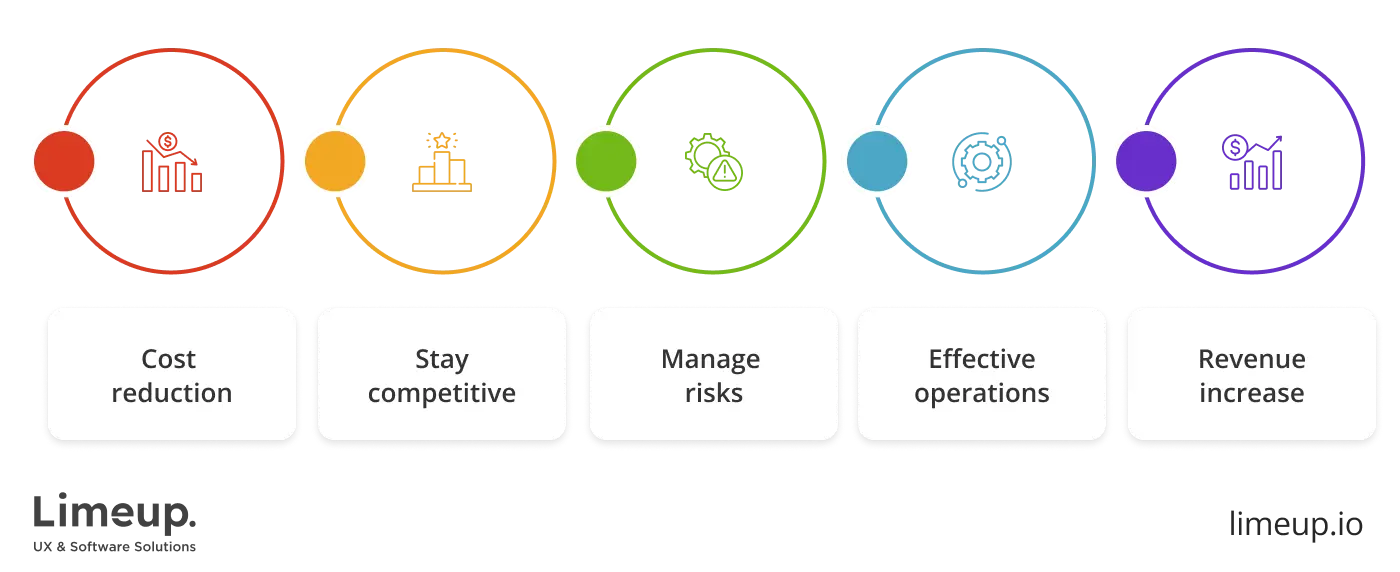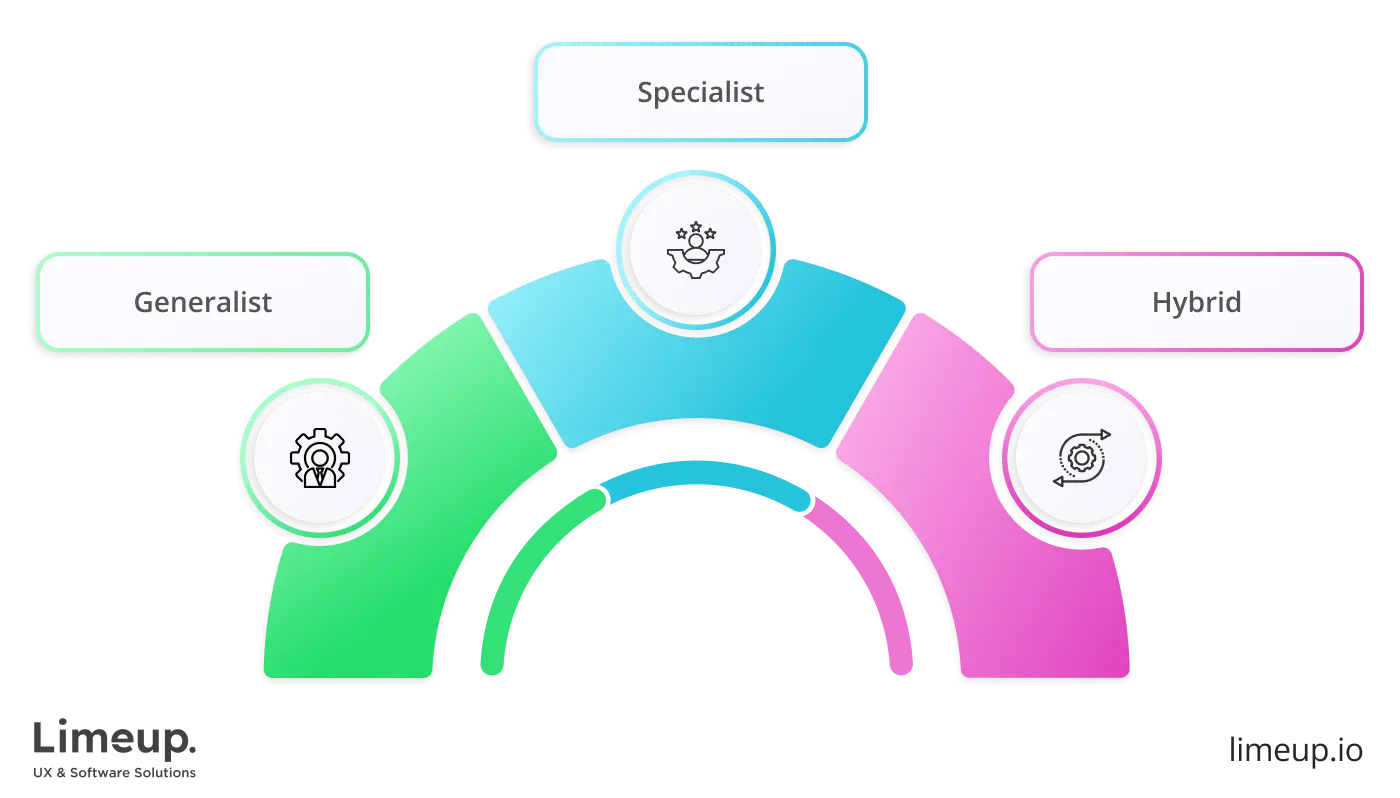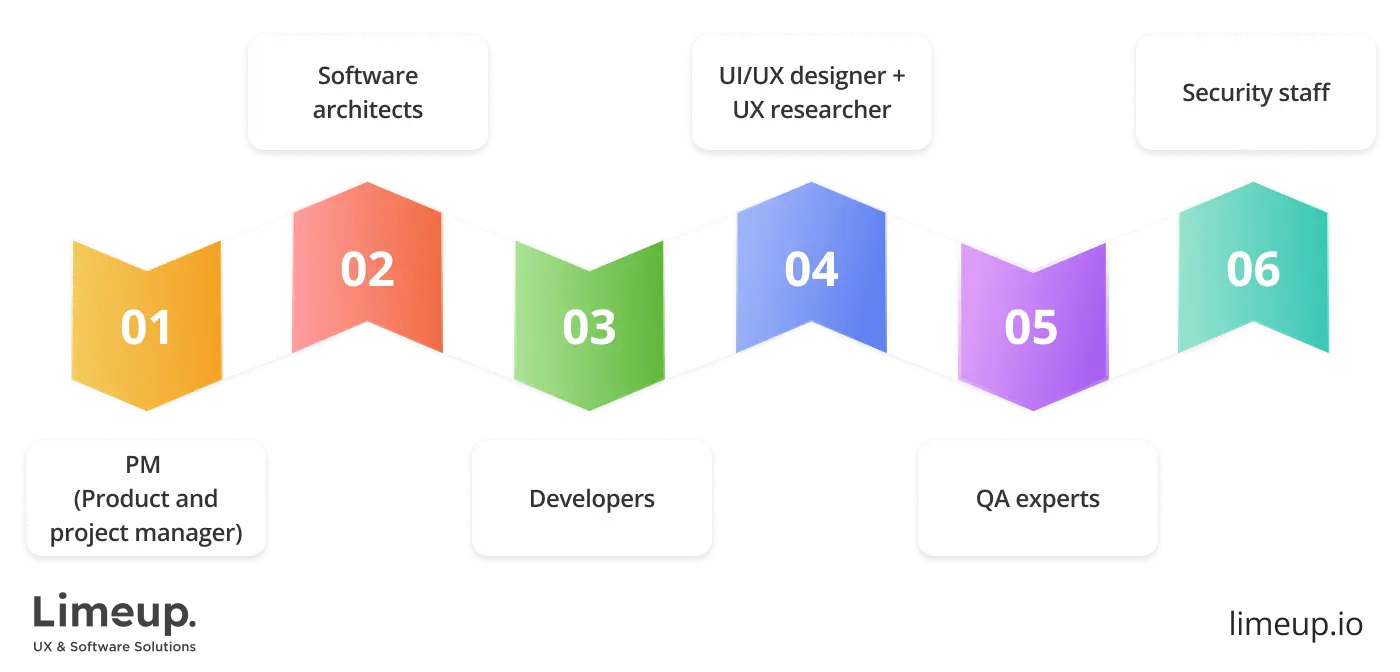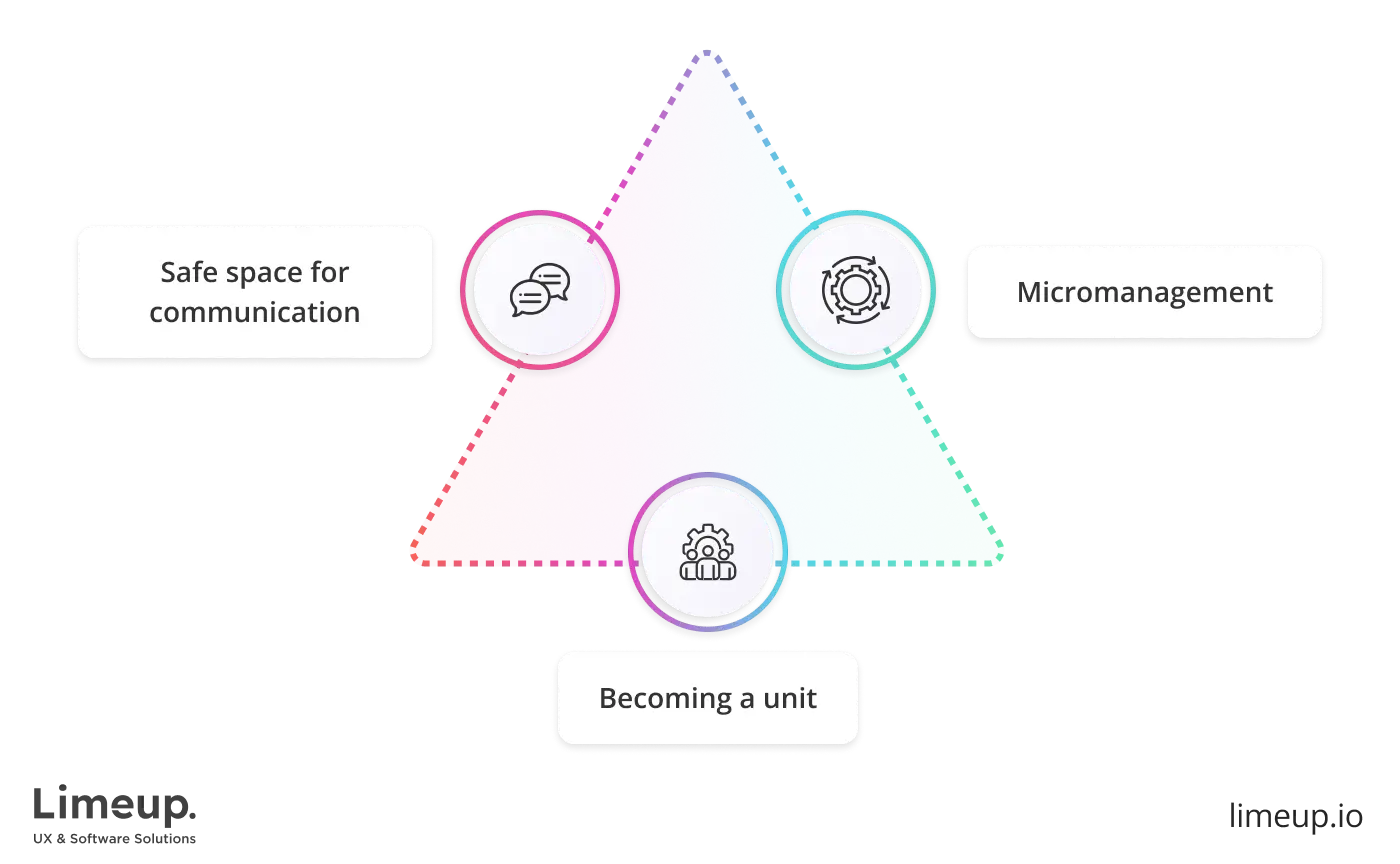How to Build a Software Development Team: Full Guide

A software development team is not a whim but a weighty investment, which, according to the McKinsey report, brings businesses 5x higher revenue growth. Sounds like a golden ticket, right? The question is how to accomplish such a project properly to deliver success, and after reading our summary, you will be able to unite a crew of dedicated tech gurus.
Cooperating with a reliable software engineering team, you are able to receive DevOps development services that provide long-term prosperity, engage customers, increase productivity by 40%, and increase your market share. Let’s hold a key position and determine crucial topics.
What is the development team?
From an idea that you receive operational cost reduction by 40%, the ability to outperform competitors even in the most cut-throat industries, implement innovations to stay competitive and manage risks — that’s all that can be conducted by a software development team.

Such a dev group is a cooperation of tech-savvy experts who build software products and deliver various services, taking on every step from ideation to deployment and ongoing support. They are problem solvers who are able to overcome challenges, address your demands, end-users’ pain points, and deliver intuitive user experiences.
Teamed-up tech visioners are aimed at creating solutions faster and with cost-efficiency in mind, they also leverage some methodologies, for example, Agile, to increase the time-to-market speed and establish transparent communication.
Such systems integrator lead customers through the digital labyrinth, covering design and development as well, allowing business owners to focus on emerging tasks and just enjoy the results whether it’s a website, mobile application, eCommerce platform, CRM or else, everything that is needed for effective operations and revenue increase.
What is the software development team structure?
The composition of such a group of contractors defines how effectively your project will be run, simultaneously it adjusts to the number of features for your product, complexity, startup or enterprise-grade, and more.
All the members (we will consider their roles further, so stay tuned) are becoming a part of collaboration as soon as you apply for a solution since analyzing streamline specifications, you already interact with managers — which is a little spoiler — and then every stage is under the control of other workers.
We would like to focus on the structure types as you do when you decide to build a software development team, it’s essential to choose which one fits your needs and provides an ability to streamline a workflow so that the building process will be smooth like butter.
Here are the core levels: management, architecture, engineering, QA, ongoing support, which interact closely as each of them depends on the previous one, and to be honest, the workload for testers will be defined by how the code is written.
As the first one communicates crucial objectives, the tech department ensures that the coding is based on these musts, devs and QA ensures the background is fine-tuned, and the last one maintains stability and gathers feedback on bugs, errors, and performance in real-time. As you can see, it’s more like an organism that can function properly if every part is healthy and productive.
Software development teams structure is also represented across different namings and types, so we have decided to present them in a short yet comprehensive table for your convenience:

| Type | Brief overview | Pros/cons | Best for |
| Generalist | Fullstack software alchemists take care of every aspect, handling not one but all aspects of a project. | + Enhanced flexibility | Startups, MVP, and companies with tight budgets. |
| Specialist | Each programmer is responsible for the front end or back end. | + Better results in particular industries | Enterprise-grade products and specified tech systems (which require a meticulous task force). |
| Hybrid | The most balanced version which covers a wide range of needs. | + Combines diversifiable hard skills and ability to work with niched requirements | Fast-growing startups, lasting projects, and medium solutions. |
You may ask, “What impacts the final choice?” and we have a clear answer — the common advice is to do your homework and outline business goals, possible budget according to your desired functionality, what product type you would like to create, and accordingly the scope of work (number of screens for apps, etc).
Software engineering teams, if they need to be built from scratch, are a tough nut to crack so assembling a league of professionals will be a daunting task that you can overcome with additional help, for instance, using our material about the top-tier software development companies in London with robust workforce.
As for our experience and surveys, we conducted amidst coders who were part of such cooperations, all of them named alignment with goals and balance of skills as the core priorities of being a part of the staff, both for employers and workers.
To investigate this subject in more detail, let’s dive deeper into characters who definitely become a part of such a crew, what are their duties and powers.
Software engineering team roles and responsibilities
“Teamwork makes the dream work” is more than buzz words or heroic quotes that can be printed on shirts — it’s a philosophy that brings success to those who are ready to go far and reach more. Referring to the statistics from Microsoft, engaged coders are 30% more productive so we will investigate the topic of who is in charge of tasks so that you gain max from such cooperation.
If you would like to find devs who are capable of working together like a well-oiled machine, here we go with the 6 detailed descriptions of hierarchy, from engineers to security experts. Without talking, let’s jump right into the list:

- PM (Product and project manager).
As it’s popular among developers, these workers are people who keep reminding about tasks and deadlines, like a common joke but we would like to examine their scope of work deeper as it’s the person who bridges the tech and communication gap between you as a buyer and your software engineer team.
They will take on project organization, getting together your requirements, setting priorities, controlling updates, workflow, roadmap, and more. If the solution creation is a ship in the digital ocean, PMs are navigating it through the whole journey, focusing on what to create and how to accomplish it.
- Software architects.
Information architecture is the base, a cornerstone of every app or website aimed at user satisfaction since your end-users are the ones who will buy your goods and services and addressing their demands across intuitive navigation is a must. They will also set the outline of the tech stack, from programming languages to frameworks and libraries.
- Developers.
We decided to write about front-end and back-end engineers in one section as they work together in order to deliver scalable and secure solution (and sometimes, you are able to hire a full-stack specialist who can do both). The first one, as it’s said in the name, is responsible for user interface and user experience, in other words, everything that a visitor sees landing on your app or website is their job.
Back-end gurus implement the skeleton that drives all the decisions of front-end devs so it performs well, their obligation is also expanded to third-party apps and database integrations, being a part of software development teams that hold server-side on their shoulders.
- UI/UX designer + UX researcher.
Sometimes, they also combine two jobs but it can also be divided into two roles so let’s define them with one sentence — they turn your vision into a user-friendly design that will a) impact the final client, b) reflect your brand’s position and values, c) work towards higher conversion rates.
- QA experts.
The cream-of-the-crop way to describe this involvement stands for the situation when you have a “Contact us” form on your website where you ask visitors to write their phone numbers, and suddenly this part accepts letters as well and the chaos starts to raise its head.
Testers will ensure that every function operates properly and no confusions will appear from the clients’ side and every potential lead receives intuitive experience which leads to purchase, subscription, or else call to action.
- Security staff.
From penetration testing to delivering security-first approach, such professionals in terms of software development team roles work in few directions, covering reducing the risk of data breaches, prioritizing consumer loyalty through enhanced security practices. Therefore, you will receive a full-fledged support with identified risks, code analysis (plus all the integrations), and certifications compliance.
Without such a specialist it’s quite challenging to protect all the data, especially if you store sensitive information about clients as a healthcare provider or fintech institution where you have to provide measures that firstly differentiate you in the market and convince users to apply for your services.
What are the steps for building a software development team?
If you are the new kid on the block in this topic and have no idea about assembling a crew — for you it’s like shaking hands with a shadow — we have got you covered with outlined stages that are interconnected with the material above, transforming into one comprehensive guide.

— Step 1. Do your due diligence.
We have investigated this theme across developers and they answered that unclear requirements lead to GIGU (Garbage in, garbage out) moreover it affects delivery time, alignment with your goals, the quality of final result, even the way clients are engaged.
Therefore, our advice when you decide to hire dedicated developers is to determine the products of your dream, whether it’s a CRM, eCommerce website with large catalogs, mobile application running on both Android and iOS, or else. Then, set a realistic budget considering the most suitable payment type: hourly rate, subscription etc.
Here you are able (and it’s advisable) to answer the question, “What software engineering team size is required?” as enterprise systems can’t be driven by one or two junior coders while a simple fitness app doesn’t demand senior devs.
— Step 2. Identify specialists.
If you think, “Hey, we have already covered this point!” yes, we did and for now you are capable of selecting roles that definitely will be useful, for example, project management area, or business analyst as a bonus.
Some customers ask why companies don’t provide a crew of all software-related experts, wouldn’t it be easier? Namely, we are trying to avoid unnecessary spending for large-budget and limited proposals in the first place, as not every firm has to hire software architects. Secondly, it’s about dynamics and stability, where everyone is on the same page.
— Step 3. Choose the hiring model.
Across managed group and dedicated ones various benefits are available since the second one means you receive an association that fully concentrates on your tasks with better control over results and processes.
Simultaneously, the project-based option is good for both freelancers like a software developer team and outsourcing agencies while in-house workers are perfect for long-term cooperation but still it costs more since you have to provide them with office, hardware, and healthcare pros.
Summing up this particular choice is standing on two whales: your investment capabilities and needs.
— Step 4. Establish the workflow + bonus tip.
With the decision to onboard digital wizards, methodologies come to the game, for example, Agile, used by many providers as an efficient approach to organize the work in sprints with iterative updates, setting clear milestones, control every stage. If this one is stable, then it’s better to hire software developers who have experience working with Agile implementation.
Another crucial standpoint is that after you define software engineering team structure (and here we go with an extra moment) you have to exemplify communication channels, trackers, and code management, for instance, from Jira and Trello to Slack and Microsoft Teams, which has a wide store of solutions.
— Step 5. Onboard professionals.
You have got here, and we are referring to the very first stage where you had to write down all the guidelines and goals since now you have to present it to digital pioneers in all the details for them to start the process of developing, designing, and more.
Further, you will together set the KPIs if needed, such as timeframes and speed of coding or else for constant monitoring and improvements. As for now, you are fully equipped to start your journey, still, we would like you to pay attention to one more chapter that is typically hidden — obstacles. Let’s review some of the vital ones to wrap up the leading matter.
Challenges in managing software development teams
As a manager, operator or CEO, you definitely want to get together like-minded people who will work effectively, and we have depicted core principals and steps wishing to focus on one more part as according to the ultimate research, there are some urgent problems from communication to lack of requirements.
Therefore to investigate this topic our specialists oversee all the difficulties and made a brief overview of each of them:

- Safe space for communication when creating a software development team is usually described as a personal (online or offline) meeting where you check the one particular employee, their statement, issues, progress of work and other nuances, as well as through calls with the crew. It’s worth noting that more than half of all IT memes are about scheduling a meeting over another one, leaving no time for actual coding, so be careful.
-
Micromanagement is a vibe and motivation killer, moreover, why do you need to hire a software development team that can’t make decisions and remain productive without 24/7 control with monitor screenshots, tracking programs or else? Keeping KPIs as a priority will be enough, as well as work benefits and good rates.
It’s possible even if you have a hybrid organization that operates both in-house and remotely, the key is to set clear values.
- Becoming a unit can be a hardship if you are working with employees who are not used to being a part of something bigger so here, outsourcing companies come into the game with fine-tuned management and tech experts who can have background operating within software developer teams and will onboard smoothly.
Familiarizing yourself with trials that can come your way will save your resources as you are able to prevent any type of issues before they appear. For now you are fully aware of complications and we would like to add that others may appear while you are collaborating, for example, managing conflicts, budget overrunning etc.
Our advice is to remain calm and communicate well, allowing your members to be involved in seeking resolutions.
Summing up
We have kicked things off so that you have a clear picture of what stands for software developers teams, who is involved, their accountability, the stages of building a significant one, and even the hardness you may face, plus tips to overcome them. Namely, all the crucial topics are covered, and you are able to set up a crew capable of delivering any type of solution that fits your business.
Whether you are seeking an opportunity to gather together tech alchemists, Limeup is here to supply you with a custom software development team of suitable candidates with a background in your industry and related projects. Book a call with our managers, share core factors about your needs, and we will structure a suitable team.

